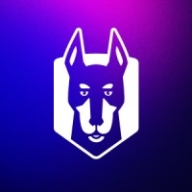

Snyk and Elastic Observability are prominent solutions in the realm of software security and observability, respectively. Snyk appears to have the upper hand in integration and simplicity, while Elastic Observability leads in scalability and comprehensive analytics.
Features: Snyk is recognized for its simplicity, affordability, and extensive integrations which are beneficial for developers seeking easy integration and rapid setup. It stands out for its self-service features and is integrable with platforms like GitHub and Slack. While its library isn't as comprehensive as older counterparts, its vulnerability database maintains high accuracy. Elastic Observability provides a robust monitoring and analysis toolkit, offering deep insights across various systems through powerful search capabilities and numerous integration possibilities. It boasts an open architecture and flexible visualization, making it suitable for large-scale enterprises requiring extensive logging and analytics.
Room for Improvement: Snyk users often request additional security scanning types, such as SAST and DAST, improved language support, and faster scanning speeds. There is also room to enhance filtering options and user notification systems. Elastic Observability could benefit from improved dashboard offerings with more predefined templates and enhanced predictive analytics. Users also suggest more transparent and scalable pricing models, and an expansion of its APM capabilities to match competitor performance metrics.
Ease of Deployment and Customer Service: Snyk supports flexible deployment options for both cloud and on-premises environments, with technical support praised for responsiveness and knowledge, despite some inconsistent experiences. Elastic Observability is primarily deployed on-premises and in hybrid cloud configurations, with feedback indicating effective technical support, though more transparency and detailed deployment guidelines are desired to simplify integration.
Pricing and ROI: Snyk's pricing is seen as somewhat high by some, yet it is generally acknowledged for its value, thanks to the breadth of features and the efficiencies it introduces in vulnerability management. Elastic Observability is often viewed as cost-effective for large enterprises, but some users find its licensing model complex and could benefit from clearer cost structures. Both solutions offer potential for positive ROI by reducing the time needed to identify and resolve issues, with Elastic Observability being more affordable than many similar tools while requiring better pricing clarity.
Elastic support really struggles in complex situations to resolve issues.
Our long-standing association has ensured smooth communication, resulting in favorable support experiences and satisfactory issue resolution.
Their response time aligns with their SLA commitments.
We could understand the implementation of the product and other features without the need for human interaction.
Elastic Observability seems to have a good scale-out capability.
Elastic Observability is easy in deployment in general for small scale, but when you deploy it at a really large scale, the complexity comes with the customizations.
What is not scalable for us is not on Elastic's side.
Snyk allows for scaling across large organizations, accommodating tens of thousands of applications and over 60,000 repositories.
There are some bugs that come with each release, but they are keen always to build major versions and minor versions on time, including the CVE vulnerabilities to fix it.
It is very stable, and I would rate it ten out of ten based on my interaction with it.
Elastic Observability is really stable.
For instance, if you have many error logs and want to create a rule with a custom query, such as triggering an alert for five errors in the last hour, all you need to do is open the AI bot, type this question, and it generates an Elastic query for you to use in your alert rules.
It lacked some capabilities when handling on-prem devices, like network observability, package flow analysis, and device performance data on the infrastructure side.
Some areas such as AI Ops still require data scientists to understand machine learning and AI, and it doesn't have a quick win with no-brainer use cases.
It lacks the ability to select branches on its Web UI, forcing users to rely on CLI or CI/CD for that functionality.
The inclusion of AI to remove false positives would be beneficial.
As we are moving toward GenAI, we expect Snyk to leverage AI features to improve code scanning findings.
The license is reasonably priced, however, the VMs where we host the solution are extremely expensive, making the overall cost in the public cloud high.
Elastic Observability is cost-efficient and provides all features in the enterprise license without asset-based licensing.
Observability is actually cheaper compared to logs because you're not indexing huge blobs of text and trying to parse those.
Snyk is recognized as the cheapest option we have evaluated.
After negotiations, we received a special package with a good price point.
Snyk is less expensive.
The most valuable feature is the integrated platform that allows customers to start from observability and expand into other areas like security, EDR solutions, etc.
the most valued feature of Elastic is its log analytics capabilities.
All the features that we use, such as monitoring, dashboarding, reporting, the possibility of alerting, and the way we index the data, are important.
Our integration of Snyk into GitHub allows us to automatically scan codebases and identify issues, which has improved efficiency.
Snyk helps detect vulnerabilities before code moves to production, allowing for integration with DevOps and providing a shift-left advantage by identifying and fixing bugs before deployment.
The best feature of Snyk is the integration with our ticketing system, which is Jira.
| Product | Market Share (%) |
|---|---|
| Elastic Observability | 3.9% |
| Snyk | 0.3% |
| Other | 95.8% |


| Company Size | Count |
|---|---|
| Small Business | 8 |
| Midsize Enterprise | 4 |
| Large Enterprise | 16 |
| Company Size | Count |
|---|---|
| Small Business | 20 |
| Midsize Enterprise | 9 |
| Large Enterprise | 21 |
Elastic Observability offers a comprehensive suite for log analytics, application performance monitoring, and machine learning. It integrates seamlessly with platforms like Teams and Slack, enhancing data visualization and scalability for real-time insights.
Elastic Observability is designed to support production environments with features like logging, data collection, and infrastructure tracking. Centralized logging and powerful search functionalities make incident response and performance tracking efficient. Elastic APM and Kibana facilitate detailed data visualization, promoting rapid troubleshooting and effective system performance analysis. Integrated services and extensive connectivity options enhance its role in business and technical decision-making by providing actionable data insights.
What are the most important features of Elastic Observability?Elastic Observability is employed across industries for critical operations, such as in finance for transaction monitoring, in healthcare for secure data management, and in technology for optimizing application performance. Its data-driven approach aids efficient event tracing, supporting diverse industry requirements.
Snyk excels in integrating security within the development lifecycle, providing teams with an AI Trust Platform that combines speed with security efficiency, ensuring robust AI application development.
Snyk empowers developers with AI-ready engines offering broad coverage, accuracy, and speed essential for modern development. With AI-powered visibility and security, Snyk allows proactive threat prevention and swift threat remediation. The platform supports shifts toward LLM engineering and AI code analysis, enhancing security and development productivity. Snyk collaborates with GenAI coding assistants for improved productivity and AI application threat management. Platform extensibility supports evolving standards with API access and native integrations, ensuring comprehensive and seamless security embedding in development tools.
What are Snyk's standout features?Industries leverage Snyk for security in CI/CD pipelines by automating checks for dependency vulnerabilities and managing open-source licenses. Its Docker and Kubernetes scanning capabilities enhance container security, supporting a proactive security approach. Integrations with platforms like GitHub and Azure DevOps optimize implementation across diverse software environments.
We monitor all Application Performance Monitoring (APM) and Observability reviews to prevent fraudulent reviews and keep review quality high. We do not post reviews by company employees or direct competitors. We validate each review for authenticity via cross-reference with LinkedIn, and personal follow-up with the reviewer when necessary.